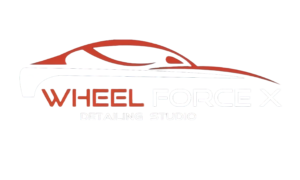Request a Call Back
Everything You Need to Know About Polishing Pads
It goes without saying that polishing is crucial for safeguarding your aircraft and ensuring your safety while flying. But do you understand how to accomplish it? Either by hand with a soft cotton cloth or with the aid of a buffing tool, polishing can be done. The latter is preferred by the vast majority of aircraft owners since it expedites the procedure and frequently yields superior outcomes. There are many options for ppf for bike.
But in order to use these buffing tools, a polishing pad, also known as a buffing pad, is needed. These polishing pads are often constructed of wool or foam. The sheer number of pads that are available can be one of the largest sources of confusion for a detailer. You should look for best quality ppf coating for bikes. There are pads available in a variety of shapes, sizes, brands, colors, and uses. A challenging choice to make if you’re a beginner detailer or someone planning to open a new studio is which pad to use for what. The demand for 3m ppf for bikes is increased over time.
Understanding polishing pads comes down to three main things:
- Composition of the pads
- Best pad for the particular application
- Ideal machines for the pads
Know about the materials of pads
Wool, foam, and microfiber are the three materials available for pads. The ppf coating for bikes price is very nominal. The cutting ability, applications, and machine compatibility of each material vary.
Also Read – How much does ceramic coating a bike cost?
Wool pads
One of the most widely used types of pads is wool. They are well-liked for their finishing and cutting ability. These pads work best for one- or two-step operations and are best used on vehicles with hard paint. The three different kinds of wool pads—four-ply, blended, and finishing pads—have differing degrees of abrasiveness. For instance, finishing pads, which are made of soft, natural fibers and are perfect for using to complete the polishing task, are made of soft, natural fibers, whereas four-ply is said to be the most aggressive of the three.
Lambs’ wool, which has lanolin—a type of natural oil—contains, is frequently used to make finishing wool pads. Because lanolin offers natural lubrication, this type of wool pad is a little more expensive than the others, but many aircraft owners believe they are worth every penny.
There are many different mixtures of wool pads. While some wool pads are made entirely of wool, others are blends. Depending on the use, the mixed pads are made from a combination of wool and synthetic materials. Duplicate wool pads, which resemble wool but are actually composed of cotton thread, are another type. These have very poor cutting and finishing qualities and cause more harm than good.
Foam pads
Foam cushions are made of foam, as the name implies. Foam pads come in two main varieties, each of which Foam cushions are made of foam, as the name implies. There are two types of foam cushions that are available:
- Foam pad with refractions: for DA machines
- Foam pad without reticulations: for Rotary machines
Popular pads include foam ones. These pads are offered for cutting, polishing, and finishing depending on their hardness. When cleaning your plane to the very end, foam pads should be used because they are soft than wool pads. These pads can eliminate superficial scratches that are close to the surface but cannot remove deep scratches or grime. Foam pads can help erase any streaks or traces that the prior polishing stages left on the surface of your plane.
Foam pads come in just two varieties: open-cell and closed-cell. Since open-cell pads have several tiny holes all over their surface, they resemble sponges in appearance. It’s ideal to pick a foam pad for the final polishing step if you’re utilizing one.
When you should use foam pads?
Popular because of their firmness are foam cushions. Depending on the level of hardness, the pad will either be used for cutting, polishing, finishing, or waxing. Therefore, the more cut the pad gives, the tougher it is. For polishing and finishing, softer pads are employed.
